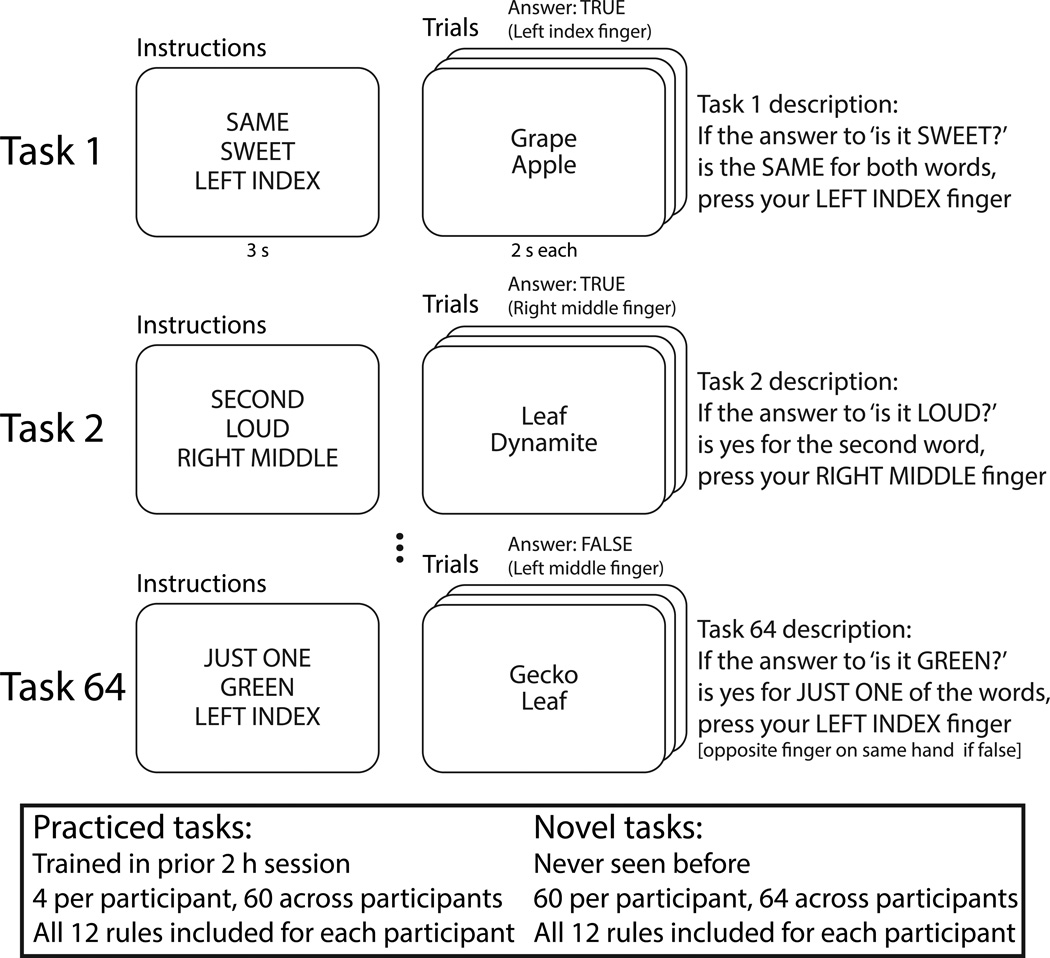Figure 2.
The permuted rule operations behavioral paradigm – in combination with recent advances in task-state connectivity methods – allows detection of flexible connectivity across a wide variety of task states. The paradigm was designed to efficiently visit a variety of task states (60 novel & 4 practiced previously per subject) while controlling for extraneous factors across those task states (e.g., input and output modalities, task timing, stimuli). Tasks were defined as unique combinations of rules, such that the same stimuli would elicit a distinct set of cognitive operations across distinct tasks. Twelve rules were included across three qualitatively distinct domains, allowing for a well-controlled sampling of a moderately sized space of possible task states spanning multiple cognitive (logical decision rules), sensory (sensory semantic rules), and motor (motor response rules) processes. Participants were over 90% accurate for both novel and practiced tasks7.

